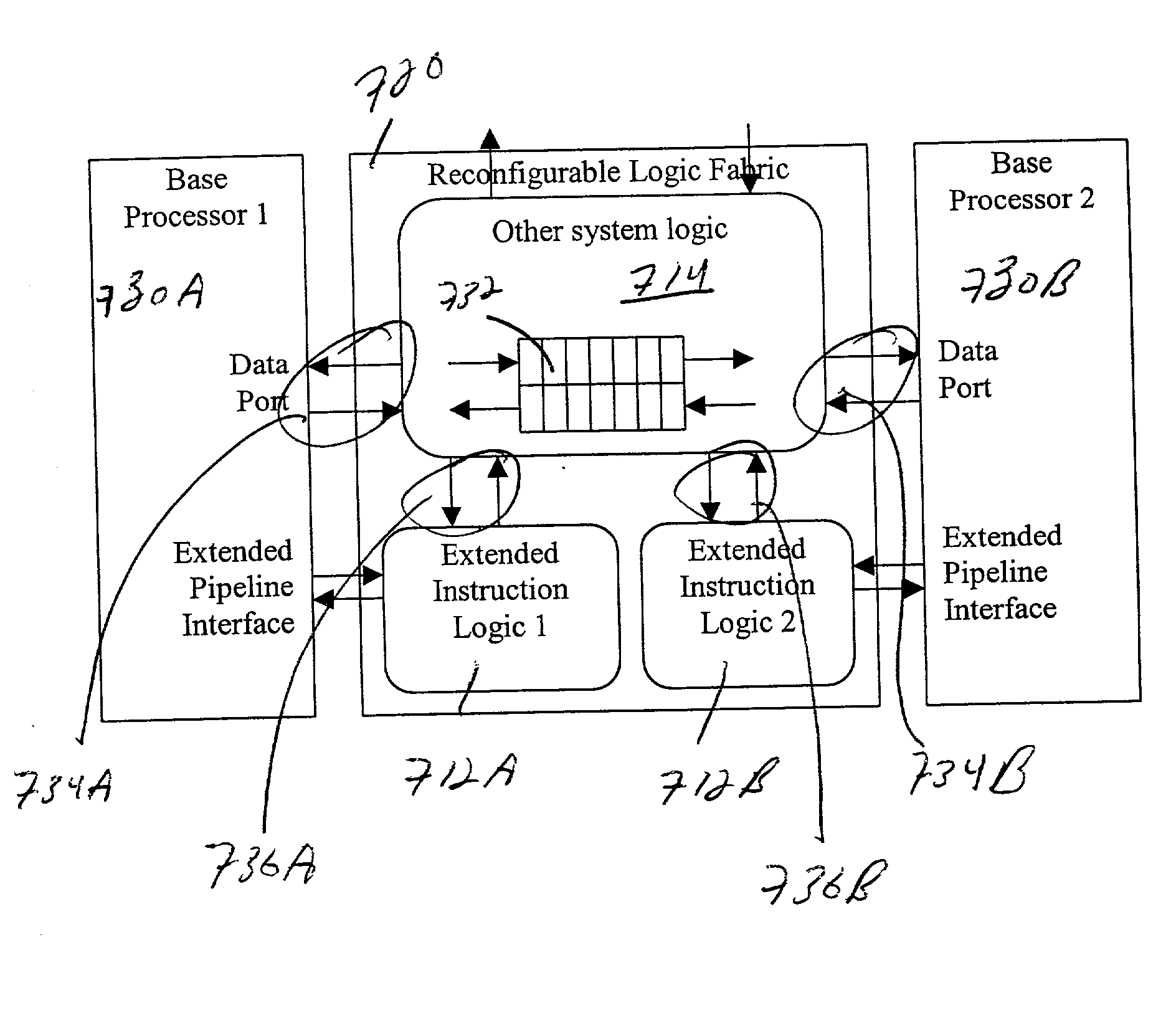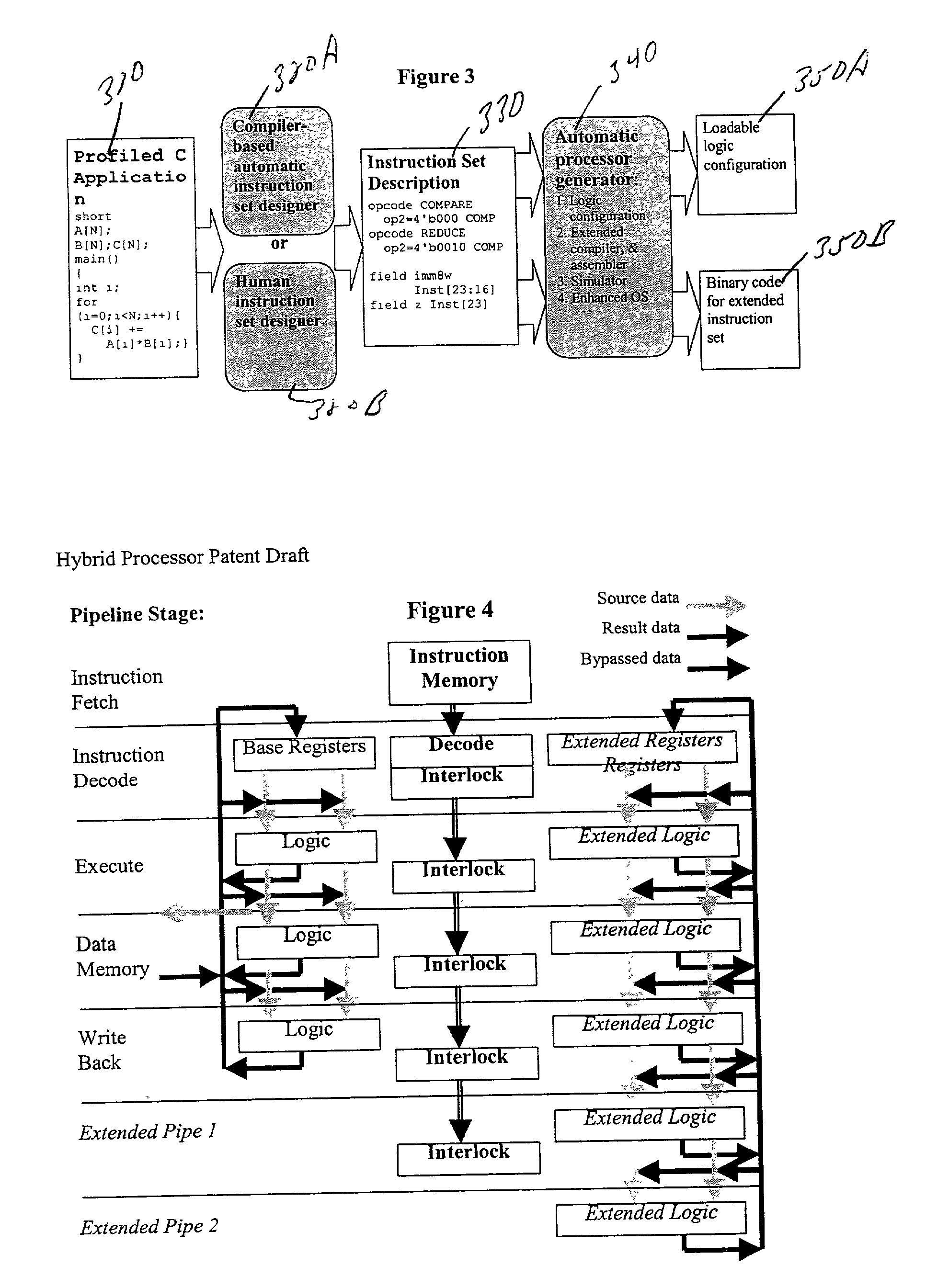High-performance hybrid processor with configurable execution units
a hybrid processor and execution unit technology, applied in the field of processors, can solve the problems of insufficient power dissipation, insufficient electronic system, insufficient bandwidth, etc., and achieve the effect of flexible capability and high bandwidth
- Summary
- Abstract
- Description
- Claims
- Application Information
AI Technical Summary
Benefits of technology
Problems solved by technology
Method used
Image
Examples
Embodiment Construction
[0057] The present invention implements hybrid application-specific microprocessors using a combination of a base processor implemented in a technology that permits high clock frequency, low cost and low power, and a reconfigurable logic fabric that is tightly coupled to the base processor and can be quickly adapted to implement a broad range of possible application-specific instructions and interfaces. This combination allows rapid personalization of a standard electronic system into an application-specific microprocessor with high clock frequency and a small number of cycles required to implement each application.
[0058] In the hybrid processor according to the present invention, as described, an essential benefit that is obtained from using tightly-coupled reconfigurable logic is this: a long sequence of generic processor instructions—typically a combination of basic arithmetic, shift and logical instructions—is replaced by a much shorter sequence of specialized instructions that...
PUM
 Login to View More
Login to View More Abstract
Description
Claims
Application Information
 Login to View More
Login to View More - R&D
- Intellectual Property
- Life Sciences
- Materials
- Tech Scout
- Unparalleled Data Quality
- Higher Quality Content
- 60% Fewer Hallucinations
Browse by: Latest US Patents, China's latest patents, Technical Efficacy Thesaurus, Application Domain, Technology Topic, Popular Technical Reports.
© 2025 PatSnap. All rights reserved.Legal|Privacy policy|Modern Slavery Act Transparency Statement|Sitemap|About US| Contact US: help@patsnap.com



